You just need to figure out your cluster assignment, and then plot each subset of the data individually while taking care that the bins are the same each time.

import numpy as np
import matplotlib.pyplot as plt
from sklearn.cluster import KMeans
import matplotlib as mpl
mpl.rcParams['axes.spines.top'] = False
mpl.rcParams['axes.spines.right'] = False
# simulate some fake data
n = 10000
mu1, sigma1 = 0, 1
mu2, sigma2 = 6, 2
a = mu1 + sigma1 * np.random.randn(n)
b = mu2 + sigma2 * np.random.randn(n)
data = np.concatenate([a, b])
# determine which K-Means cluster each point belongs to
cluster_id = KMeans(2).fit_predict(data.reshape(-1, 1))
# determine densities by cluster assignment and plot
fig, ax = plt.subplots()
bins = np.linspace(data.min(), data.max(), 40)
for ii in np.unique(cluster_id):
subset = data[cluster_id==ii]
ax.hist(subset, bins=bins, alpha=0.5, label=f"Cluster {ii}")
ax.legend()
plt.show()

